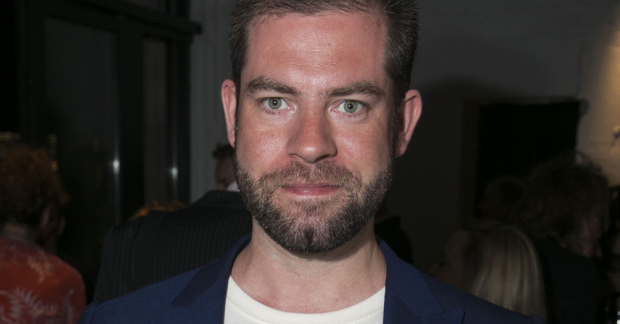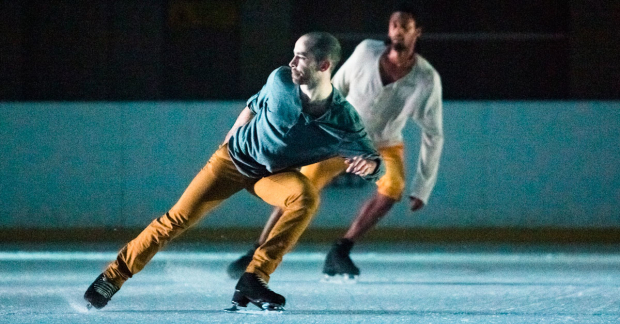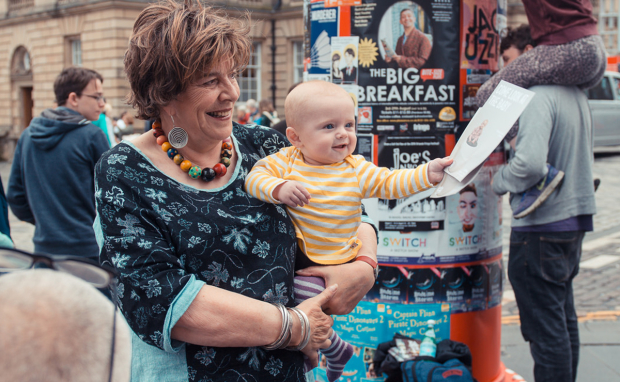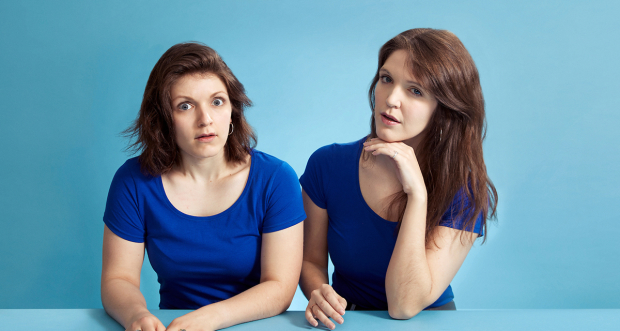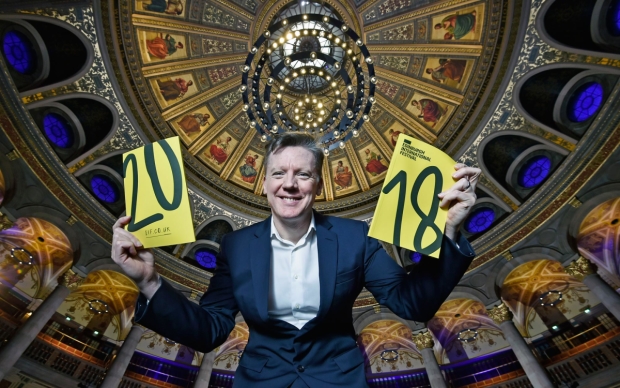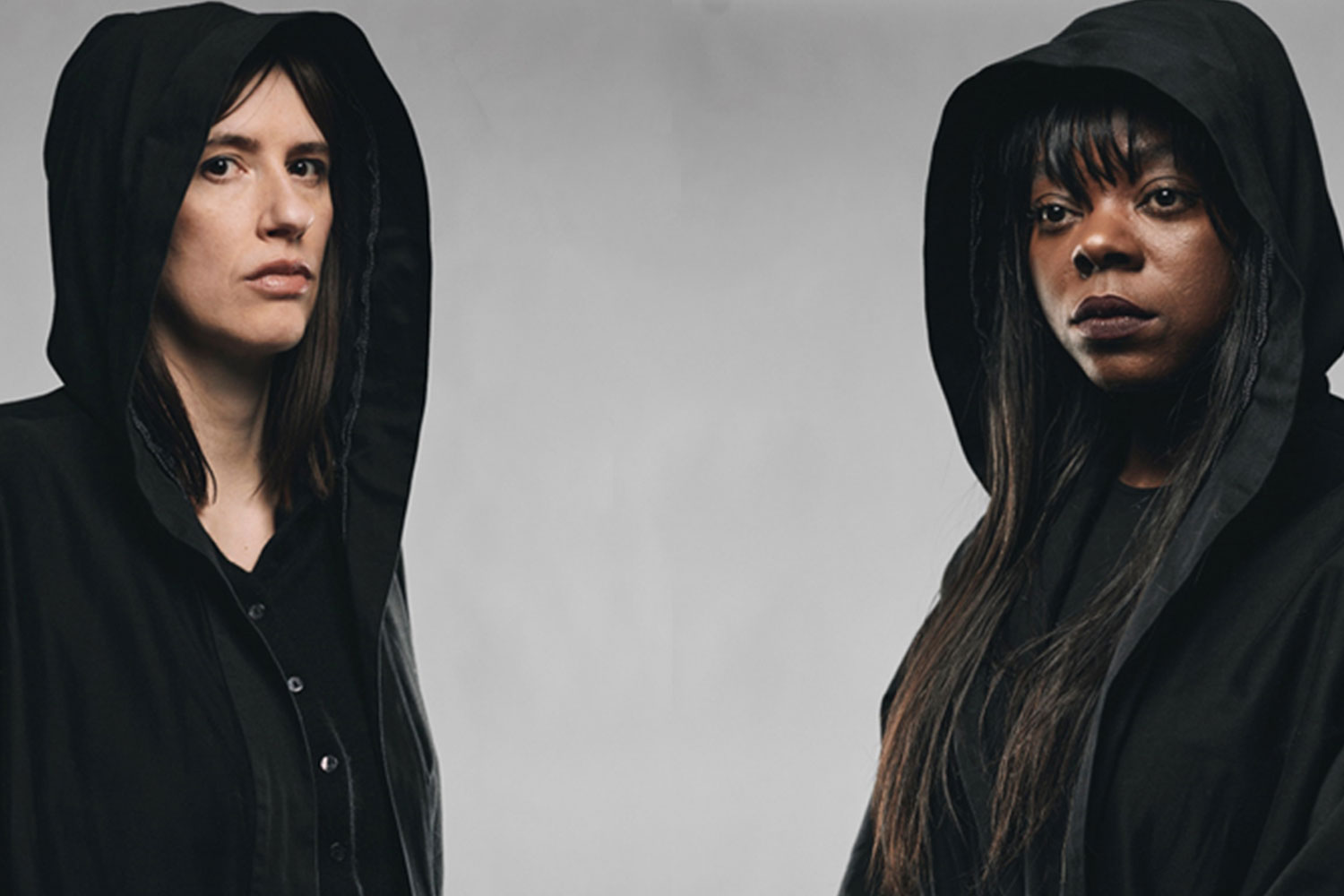Katie Mitchell: 'La Maladie de la Mort is a post-Brexit event'

© Jan Versweyveld
Katie Mitchell has created work for everywhere from the National Theatre, to the Royal Court, to Avignon Festival, to the Schaubühne in Berlin and to the Royal Opera House. She has built a reputation for creating challenging, film-infused pieces – such as in her 2007 Waves – that have the audience watching a mix of a film set and a stage. In recent years she has mostly created theatre work in Europe, apart from the searing Anatomy of a Suicide at the Royal Court in 2017, and one of her most recent productions is La Maladie de la Mort, one of the centre pieces of this year's Edinburgh International Festival. The show sees her returning to using cameras and live stage action and was created at Théâtre des Bouffes du Nord, Peter Brook's legendary theatre in Paris. Here she explains a little more about the remarkable production.
It will be the first time we see La Maladie de la Mort on these shores: what can people expect?
It's an adaptation of a Marguerite Duras novel, which she wrote in the 1980s. The adaptation and modernisation of the story has been undertaken by Alice Birch and I'm working with a filmmaker called Grant Gee and a video designer called Ingi Bekk who have come up with a live cinema version of it. So it's like watching a live cinema show and the finished cinema product at the same time.
It sounds a little as though it's like Waves – is that right?
It has a relationship to Waves, but it's much more filmic and sophisticated than Waves, from a technological point of view. We have a film set, with walls that move in and out, live cameras and camera people operating them.
What does this way of working with a camera bring to an audience experience, do you think?
I think it's subjectivity. In theatre we can't ever know how one character looks at another in the way that film can. So when Hamlet looks at Ophelia, we don't know what he's seeing, or how he frames her. But with film you do have a wonderful subjectivity of frame. So with the two characters in the play, you can see how the man looks at the woman's body and how the woman looks at the man's body in a very subjective, filmic and close up way, which you can't do in theatre. A strong part of the show is the investigation of the male and female gaze.
Is it right that the book comes mainly from the male point of view?
Yes, we've adjusted it so it's a bit more balanced and in the end it comes down more on the female point of view.
What actually happens in the story?
There's a man who has serious issues with relating to women and in our reading of it, the man has a porn addiction. He wants to have the feeling of love so he pays a prostitute a lot of money to come and visit him over a series of nights and the deal is that he's able to do anything that he wants, either emotionally or sexually. She's paid a lot of money for it and finally, in this adaptation, our female character draws a line and says no. It's a pretty dark and sinister thriller world.
What has been your experience of working at Théâtre des Bouffes du Nord?
It's fantastic. Peter Book isn't running it any longer, but he's around and he popped in on our second day of rehearsals to welcome us and that was important particularly to the British artists involved, but also the Spanish, Icelandic, French, German and Austrian ones too. When I had to choose what to direct in that iconic space, I thought about it a lot. Brook had explored the limits of live performance with the actor in the empty space, so I felt that the best offer I could make would be to do a live cinema project, which is the complete opposite to what normally happens in that theatre. Then I wanted to enjoy the tension between the history of the space and the technology there.
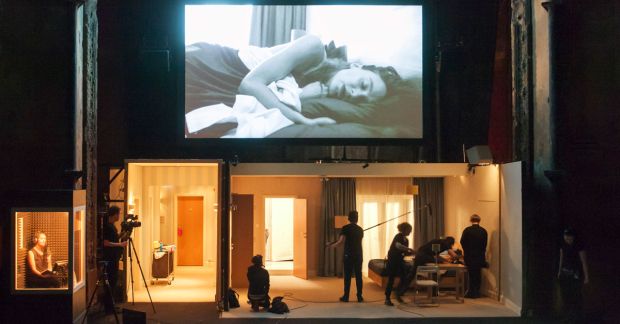
© Stephen Cummiskey
What did Brook think?
I was lucky enough to be sat next to Peter for the whole performance and I could see him interrogating it and then afterwards he asked me a lot of questions about why I had done it like that. It was a very interesting and exciting experience.
You have an international cast…
Yes, there's three actors, two are French one is British. It's very much a British-French collaboration, very much a post-Brexit event. We're really celebrting the collaboration between different countries and the UK.
Alice Birch is one of your regular collaborators, has she been there a lot on this project?
Yes, she's done a tremendous amount of work, it's been brilliant as always, collaborating with Alice. We did lots of rewriting in rehearsals and she's an amazing colleague and is intellectually very fierce, formally very radical and precise and psychologically really insightful.
You have been working mainly in Europe, is it very different to working in the UK?
Each country is different, and it's tricky to generalise. The main differences I noticed is that in France, the funding structure means you have to spend a lot of time way before you have even done your design deadlines, telling everyone what you're making. Then in Germany they really have rep systems, and are interested in the concept and formal aspects of what you're going to do. In the UK, I always feel that there's caution. Caution about things being too radical, or too expensive, or too extreme.
Read all our Edinburgh Festival coverage
La Maladie de la Mort runs at the Lyceum from 16 to 18 August and transfers to the Barbican from 3 to 6 October.



